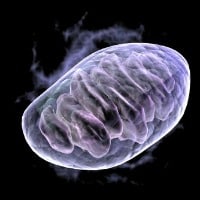There is currently no cure available for the majority of such conditions, and clinical care is largely restricted to negating the complications of these diseases or assisting prevention through prenatal testing, mitochondrial donation therapy and preimplantation genetic diagnosis. As such, the limited options and lack of curative treatment options have created more opportunities and investments into individual therapy trials, focused on optimizing oxidative phosphorylation and improving antioxidant capacity. In essence, a combination of vitamins, including coenzyme Q10 (ubiquinone), thiamine and riboflavin in addition to other regenerative medicinal approaches in the telomeres, stem cell and senescent cells is recommended. As of February 2020, more than 250 trials are ongoing worldwide investigating potential therapeutic approaches.
Mitochondrion Application Biomedicine Inc. (MAB or MitoBioMed) is one such company conducting such trials and aims to fulfil this mission by forming a strong competitive team with our medical institutions and customers, as a long-term and trusted technology and capacity provider in the global mitochondrial /cell therapy industry. Scientists are working night and day, racing to find a cure for the novel coronavirus. An East-meets-West combination of medicines is now suggested to be the recommended course.
With the advent of an ageing society, many studies in the past ten years have shown that mitochondria are closely related to ageing and degenerative diseases (such as neurodegenerative diseases such as Parkinson’s disease and Alzheimer’s disease, etc). This is because when mitochondrial function is abnormal, it will trigger a lack of energy supply and oxidative stress, and even induce cells to enter apoptosis or autophagy, which will cause disease.
MAB also establishes a series of training and certification mechanisms for medical personnel (such as doctors) and cooperates with medical institutions and academic institutions around the world. This makes it a prime candidate for impact investing towards sustainability development, in alignment with the United Nations and its 17 Sustainable Development Goals (SDGs).
The Company along with other biotech companies in the field have developed many product lines, including mitochondrial activated stem cells (Mitocell), mitochondrial biologics (Mitobio), mitochondrial activated immune cells (MAKcell), mitochondrial function tests (Mitoscan), mitochondrial aesthetic medicine, mitochondrial cell bank(Mitobank), mitochondria activated herbal extracts (Dynamito), mitochondria activated health food (Mitofood), mitochondria activation culture medium(Stemoto), etc., Mitocell, Mitobio, and MAKcell are all ready for the next phase of clinical development. Other products are cooperatively sold in the fields of preventive health care, medical beauty, cell culture, detection and analysis. These products have proven safety and effectiveness in preliminary studies.
Furthermore, Mitochondria for stem cell therapy is another frontier for regenerative medicine. Stem cells are primitive and unspecialized cells, they are a type of cells that are not sufficiently differentiated and have the potential to regenerate various tissues and organs. In medicine, stem cells have long been considered to have potential for medical applications because of their strong potential for treating physical damage caused by disease, aging, genetic factors or trauma. In international research, mitochondria are an important factor affecting the quality of stem cells. By analyzing the function of mitochondria in stem cells as a way to identify the quality of cells, it provides a scientific way to identify cell quality. The company’s research is to improve the quality and function of stem cells by screening and increasing mitochondrial function. Stem cells activated by mitochondria have better therapeutic effects. Our company’s mitochondrial activated stem cells have also been proven to be useful in the treatment of Parkinson’s disease, Osteoarthritis, Multiple System Atrophy
Lastly, in addition to the aforementioned products in the market, mitochondrial replacement techniques (MRT) work to prevent transmitting mitochondrial DNA (mtDNA) diseases from mother to the next generation. Such diseases vary in presentation and severity. The goal of MRT is to prevent the transmission of such diseases by creating an embryo with nuclear DNA (nDNA) from the intended mother and mtDNA from a woman with non-pathogenic mtDNA through modification of either an oocyte (egg) or zygote (fertilized egg). This will help alleviate common symptoms including developmental delays, seizures, weakness and fatigue, muscle weakness, vision loss, and heart problems, which in combination lead to an increase of morbidity and in some cases premature death. While research continues to be conducted, if effective, MRT could satisfy the desire of women seeking to have a genetically related child without the risk of passing on mtDNA disease.
In the US alone, mitochondrial diseases affect around 1 in 5,000 individuals. It is also estimated that 1,000-4,000 children are born with a mitochondrial disease every year Therefore, there is a direct need to focus on building a world class professional mitochondrial technology and manufacturing leader, with a purpose in creating affordable healthcare and biotech leadership in preventative medicine. It also creates a space for the community of social impact investing to be more deeply involved in health and wellbeing.




